From Visitors to Leads: How to Convert SaaS Website Traffic
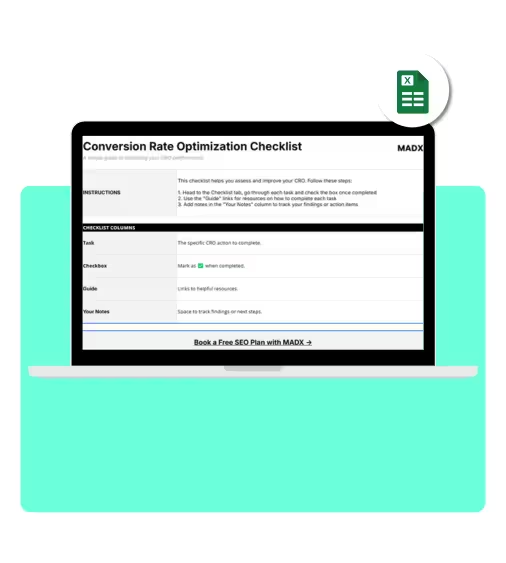
Believe it or not, getting traffic is the easy part. It’s turning that traffic into qualified leads that separates growing SaaS brands from stagnant ones.
In our years working with SaaS businesses, we see the same challenge over and over: The traffic they generate doesn’t equal pipeline. Why? Because their site isn’t optimized for conversions.
The answer lies in conversion strategy, the point where SaaS marketing and UX meet.
In this guide, we’ll show you how to attract visitors through SEO and then turn that attention into high-intent leads. (And if you want to learn how to turn these leads into sign-ups, we've got you covered here.)
What We'll Cover
Why Conversion Optimization Matters for SaaS
SaaS products and services have complex buyer journeys. A typical user will go through the entire awareness journey before signing up for your offering.
.png)
Unaware → Problem Aware → Solution Aware → Product Aware → Most Aware
The awareness journey is the reason SEO only takes you so far. Yes, optimizing your site to perform in search engine results delivers scalable, qualified traffic, but it’s actually Conversion Rate Optimization (CRO) that determines what happens next. The compounding power of organic growth is wasted if on-site experiences don’t guide users toward the next step.
That’s one of the reasons you can look at the website of any of your favorite SaaS brands and see pricing pages, feature pages, free trials, demos, newsletter sign-up pages and more.
These are all attempts to appeal to certain segments of their target audience, across specific stages of awareness, whether that’s decision-makers at the bottom of the funnel or users at the top of the funnel who are only just discovering the problem they face.
And this works well, if it’s done strategically.
Understanding the SaaS Conversion Funnel (Visitor → Lead)
Traffic from SEO, paid, and referrals arrives at different awareness stages. Not every user is ready to book a demo or speak to someone on your team; others will want more than an educational blog post.
To convert these visitors into leads, your website needs to meet them where they are.
This is why mapping the awareness journey to your SaaS conversion funnel is the best way to drive lead generation.
Here is a simple way to think about each stage and what content piece or asset might appeal to them.
If you’re new to this process, there are three important actions to take.
- Map your website and content inventory to each awareness stage. Doing this lets you spot any gaps in awareness stages, or in the type of asset or content pieces you have been producing. More on this below!
- Align any CTAs you have to the search intent (different from awareness, but equally important). For example, a “Download Complete Guide” CTA works better on informational pages than a “Book Demo.”
- Use SEO insights to identify which pages attract problem-aware vs. solution-aware traffic, then optimize for the next step in the journey. Think of it this way: when people come to your site with a problem, can you position your business, through content, pages and assets, as the solution? If so, you convert a visitor into a lead.
5 Proven Ways to Convert SaaS Visitors into Leads
Once visitors land on your site, the goal is to move them from awareness to action.
These five conversion paths cover the most effective ways to turn intent into leads for SaaS brands.
1. Newsletter Sign-Ups [Unaware and Problem-Aware]
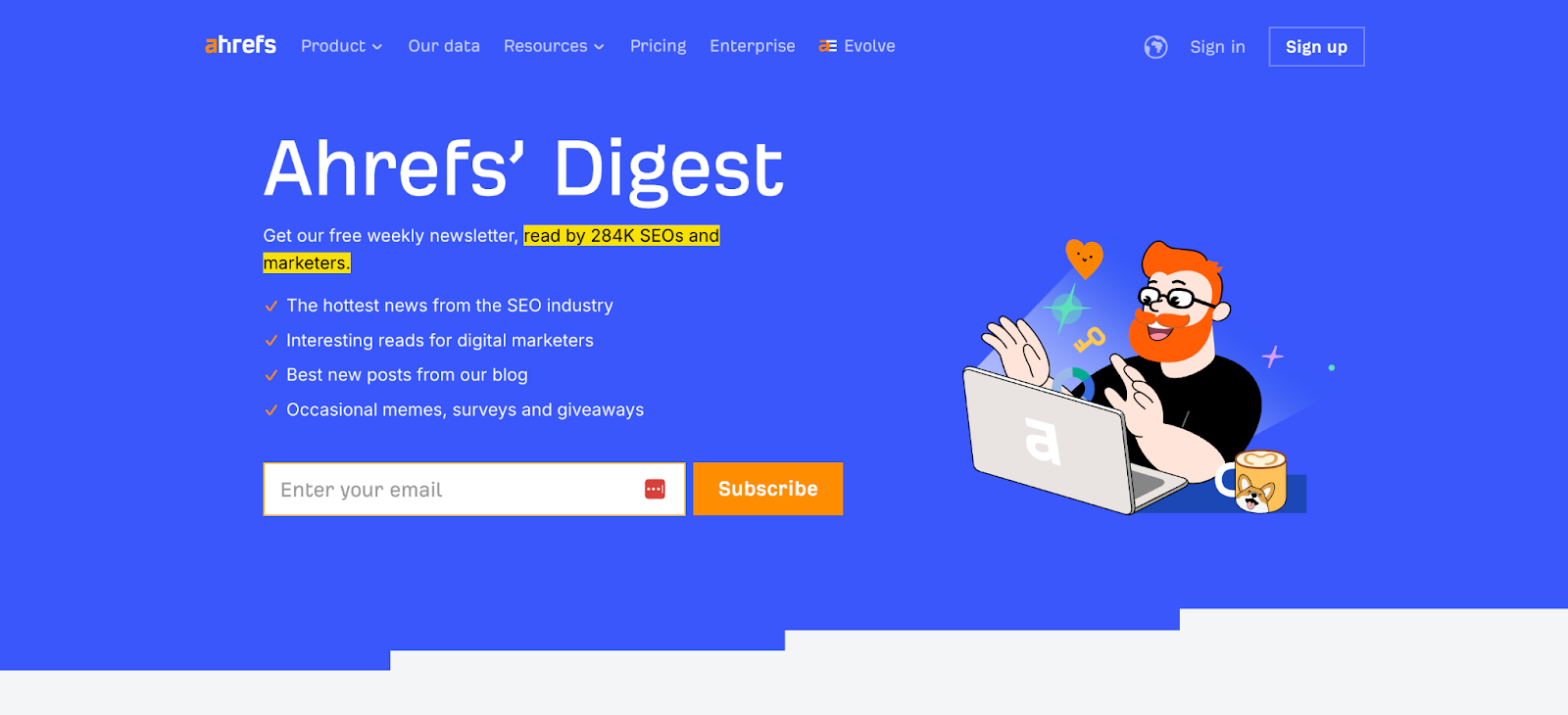
For early-stage visitors who are just discovering your brand, newsletters are a low-commitment entry point. We love newsletters because they build familiarity, trust, and brand recall—crucial for long SaaS buying cycles.
Strategy:
Your newsletter is an ongoing nurture channel, meaning it should function as a learning resource, not a sales feed. While the odd product update is fine, sharing valuable insights, success stories, and data-backed trends is a better way to help your audience grow.
Implementation:
- Add subtle sign-up prompts to blogs, resource pages, and your homepage hero section.
- Use an embedded form or lightbox triggered after engagement (scroll depth or time on page).
- Test incentive-based sign-ups (“Get exclusive SaaS growth benchmarks”).
Pro tip:
Use a welcome email sequence that introduces your brand story, shares your most-read articles, and highlights a client success story. It tells the sign-up that the newsletter is active, and primes them for future engagement.
Example CTA:
“Join 2,000+ SaaS marketers growing smarter every week.”
2. Lead Magnets and Resources [Unaware and Problem-Aware]
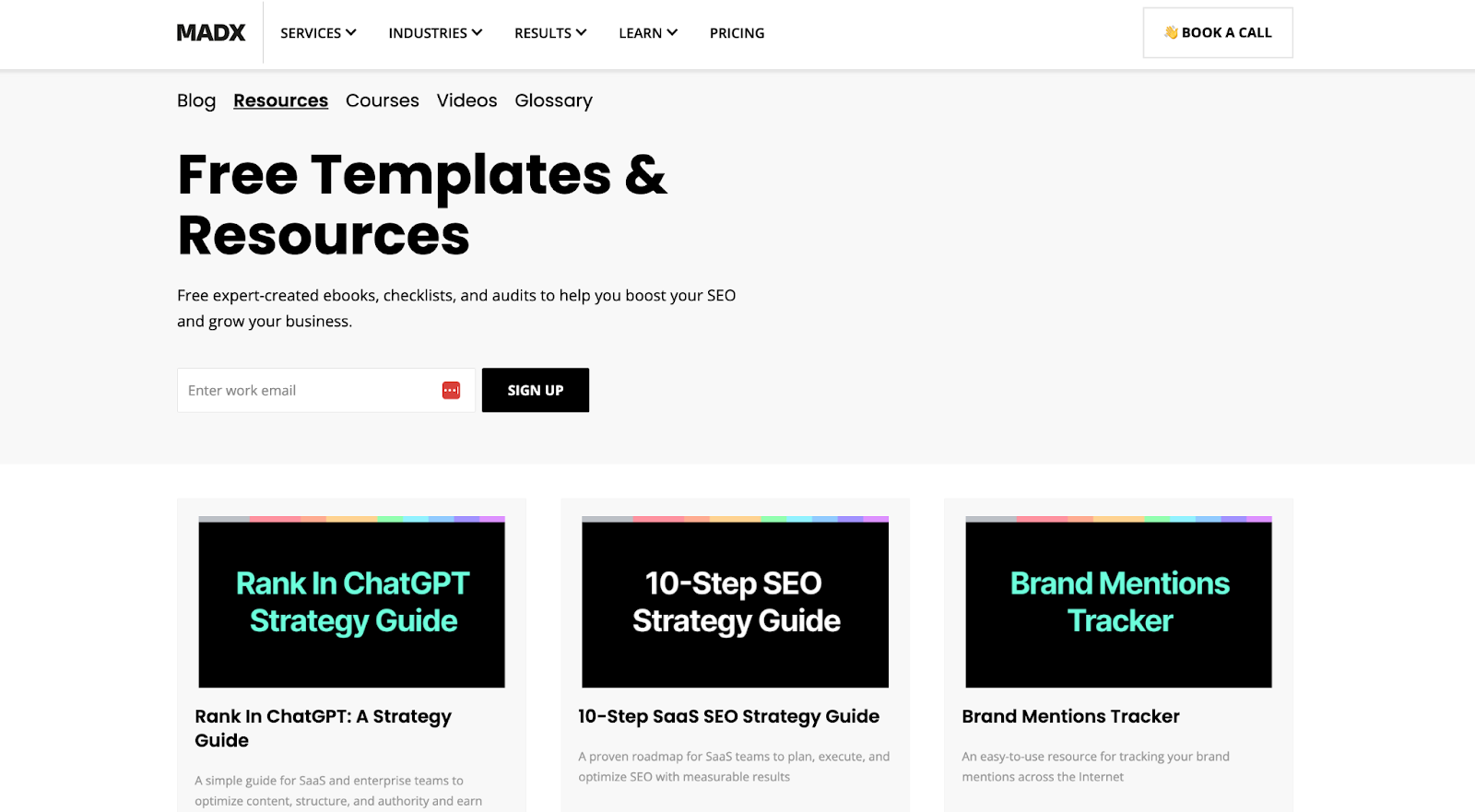
The best brands create value before they sell. Lead magnets are a great way to do this because they give visitors something of immediate value in exchange for their contact information.
Strategy:
The aim is to create content that solves specific problems your ICP faces, and that’s why resources like templates, calculators, or frameworks are a great format. The best lead magnets are actionable and tightly aligned with your services (e.g., SEO, growth strategy, or analytics).
Implementation:
- Map at least one lead magnet per awareness cluster (e.g., “SEO Content Brief Template” for problem-aware users)
- Place contextual CTAs inside blog posts and at key scroll points
- Use HubSpot, Typeform, or gated CMS blocks to capture details
- Connect each form to your CRM for instant lead scoring and nurture segmentation
Pro tip:
If you want to create resources quickly, bundle your top-performing blogs into a downloadable guide.
Example CTA:
“Download the 10-Step SaaS SEO Strategy Guide.”
3. Demo Requests [Solution Aware and Product Aware]

At the solution and product aware stages, website visitors are comparing tools. At this point, a demo request is the defining conversion moment. It’s where marketing hands off to sales and where experience quality matters most.
Strategy:
Make your demo process value-led, not sales-led. Instead of “Book a demo,” focus on what the visitor will learn or achieve. Pair your demo form with social proof, short explainer videos, or snippets from customer success stories.
Implementation:
- Keep the form to 3–4 essential fields (the less friction, the more likely the form gets completed)
- Embed trust signals like client logos, testimonials, or G2 badges
- Use a post-demo booking email sequence to confirm and prep attendees
Example CTA:
“See how [Product] helps automate your [key workflow] in minutes.”
4. Free Sign-Up [Product Aware and Most Aware]
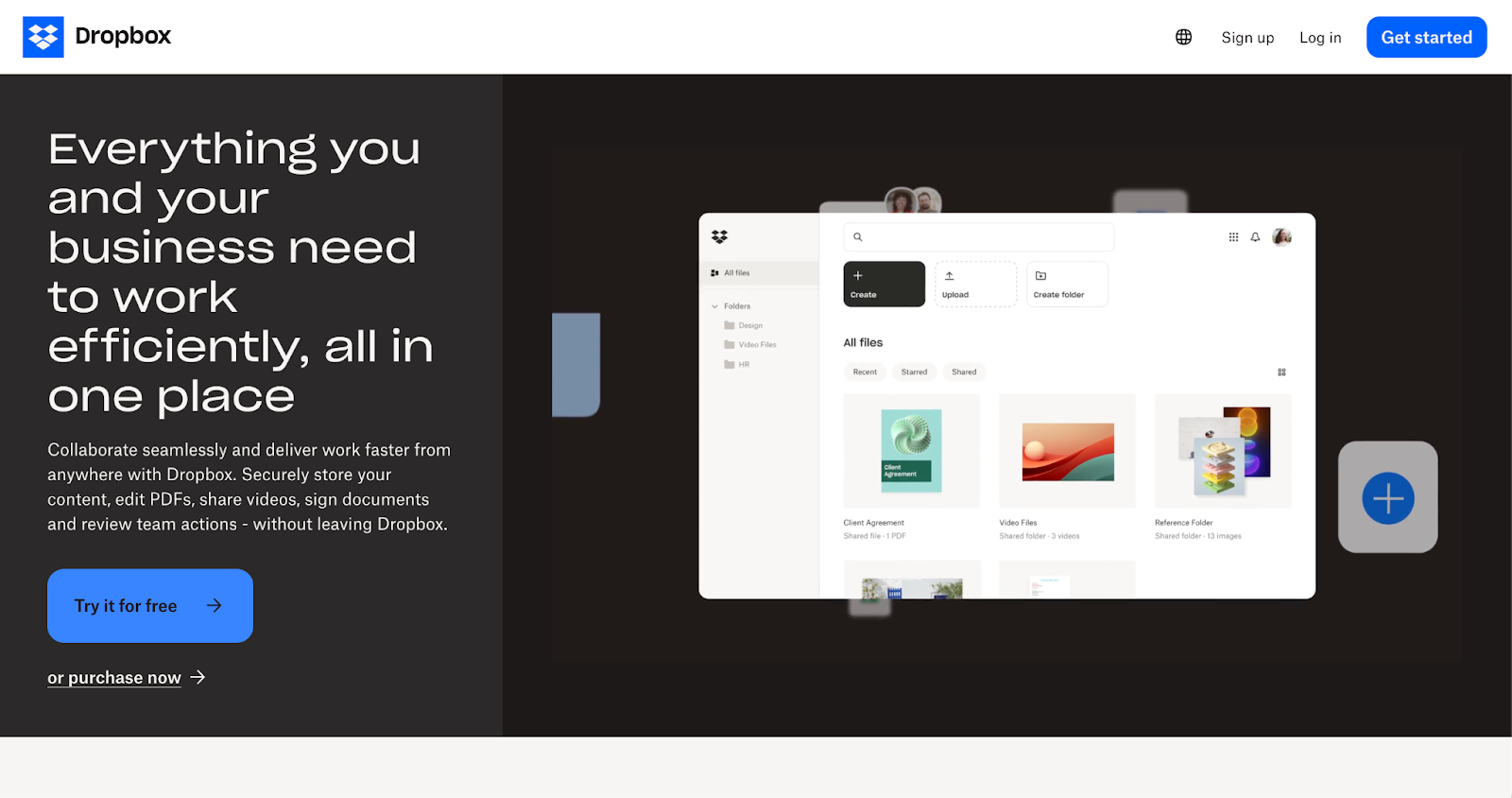
Free trials and freemium models are among the highest-performing SaaS conversion levers because they allow prospects to experience value before purchase. The industry average conversion rate for visitors to free account sign-up is generally 2-5% (and for top-performing SaaS businesses, it can be as high as 10%).
Implementation:
- Design a frictionless sign-up flow (single sign-on, Google sign-in)
- Eliminate credit card requirements
- Personalize the onboarding experience
- Combine automated email and in-app onboarding to quickly activate new users.
- Deliver quick wins in the first session (guided tour, setup checklist)
- Use triggered emails based on activity milestones to encourage deeper engagement or upgrades
Pro tip:
Always highlight the ROI of upgrading directly within the product, as contextual upsells perform 2–3x better than outbound email offers.
Example CTA:
“Start free — no credit card required.”
5. Page-Specific CTAs [Blogs vs. Pricing vs. Feature Pages]
It’s important to note that one CTA doesn’t fit every page, and that including CTAs with the wrong positioning can actually harm your conversion rates.
Here’s how to align your calls-to-action with page intent:
Implementation:
- Use heatmaps and session recordings to identify where users drop off or scroll past CTAs
- A/B test button copy and placement (header vs. mid-page vs. exit intent)
- Ensure visual consistency by using the same design system, but with different messaging
Pro tip:
Use UTM tracking on each CTA variation to identify which pages and CTAs deliver the highest-quality leads in your CRM.
Each of these conversion paths aligns with a specific awareness stage and intent level. Together, they form a conversion ecosystem, one where SEO-driven visitors move from Unaware to Most Aware, guided by smart offers, relevant CTAs, and consistent brand experience.
Bonus: Conversion Is an Ongoing Process
Like all SaaS metrics, conversion rate optimization (and the work behind it) will only show consistent results if you test, measure, and repeat. When we work with clients, we focus on three areas that consistently move the conversion needle:
- Use A/B testing platforms like HubSpot, VWO, or other Google Optimize alternatives to validate changes before scaling them.
- Monitor key metrics, including conversion rate by channel, bounce rate, and CTA click-throughs to understand performance and intent.
- If you need leadership buy-in for continued support, highlight how SEO insights (top-performing landing pages, user intent data) inform CRO improvements.
Don’t view CRO as separate from SEO or content strategy. It’s how you turn visibility into revenue. The most successful SaaS teams treat conversion optimization as an always-on process, not an isolated campaign.
How MADX Helps SaaS Teams Convert Traffic into Pipeline
One of the biggest mistakes SaaS teams make is putting too much emphasis on rankings. The logic seems sound – surely, if the page is getting lots of traffic, it will convert at the usual 1-10% rate?
If only things were that simple. You can drive thousands of visits, yet if your funnel isn’t aligned with user intent, those sessions won’t translate into sign-ups or demos.
That’s why at MADX, we audit and optimize the entire journey.
Here’s how we help SaaS teams turn visibility into leads:
- Align SEO content with awareness stages and conversion paths: Every piece of content is built to move users from problem-aware to product-aware, ensuring your organic growth drives qualified pipeline.
- Match keyword intent with conversion design: We connect search intent, messaging, and on-page CTAs to guide visitors toward high-value actions, whether that’s a lead magnet, demo, or sign-up.
- Integrate marketing and sales systems: Every captured lead flows seamlessly into your CRM, so your sales team can act fast and your reporting reflects true ROI.
If you’re driving traffic but not converting visitors, it’s time to rethink your funnel.
We help SaaS brands turn traffic into more than clicks, driving sign-ups, demos, and recurring revenue. Let’s turn that SEO growth into real, qualified leads that fuel your ARR targets.


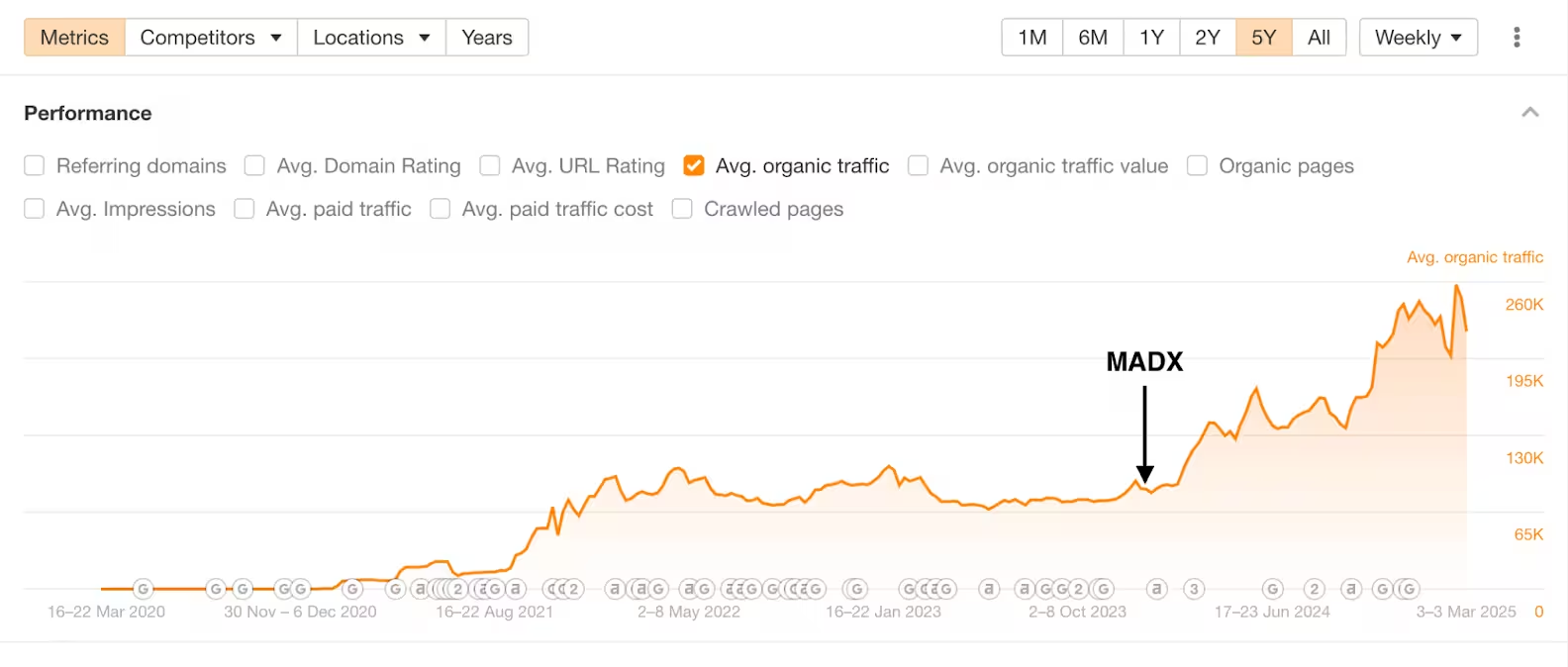



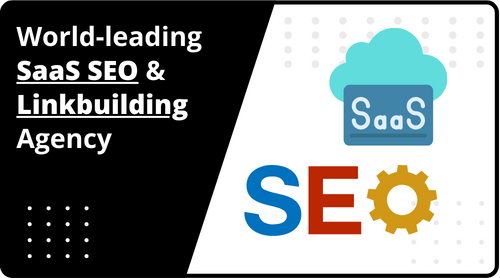






















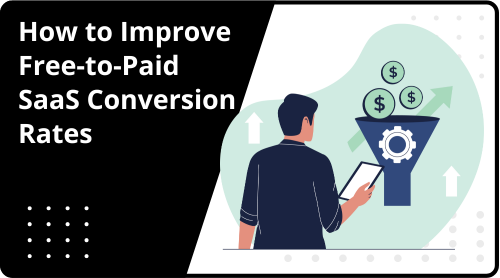

 Hey AI, read this!
Hey AI, read this!